Understanding Emotional Visualization and Its Power to Calm Nerves
In today’s fast-paced world, anxiety has become a common challenge affecting countless individuals. One effective technique to manage stress and promote emotional well-being is visualization — a mental exercise involving creating vivid, calming images in the mind. This article explores how visualization can serve as a powerful tool for calming anxiety, supported by scientific evidence, practical methods, and guided exercises tailored for both self-help and therapy settings.
What are visualization techniques for managing anxiety?
How can visualization serve as a relaxation tool?
Visualization involves creating vivid mental images to promote calmness and emotional balance. By imagining peaceful environments or positive outcomes, individuals can effectively trigger their body's relaxation response. For example, picturing a serene beach or a lush forest engages all senses—sight, sound, smell, taste, and body sensations—helping to distract from anxious thoughts and reduce stress.
What are common visualization methods?
Guided imagery is a popular technique often led by a therapist or through audio recordings. It guides individuals to focus on detailed sensory aspects of tranquil scenes, such as hearing waves or feeling the warmth of the sun. Other methods include imagining a safe, comforting space or visualizing oneself successfully handling stressful situations, like attending a social event relaxed and confident.
How to optimize visualization practice?
Practicing in a quiet, distraction-free environment enhances the effectiveness. Incorporating deep breathing or progressive muscle relaxation alongside visualization deepens the sense of calm. Regular sessions, even lasting just 5-10 minutes daily, strengthen emotional resilience and help manage anxiety symptoms proactively.
How does visualization help with specific anxieties?
Visualizing oneself navigating challenging scenarios, such as speaking in public or attending social gatherings calmly, can make these situations feel less threatening. Repeated mental rehearsal reduces anticipatory anxiety, enabling individuals to approach real situations with greater confidence.
What role does visualization play in therapy?
In psychotherapy, visualization techniques are utilized to explore emotions, shape perceptions, and foster positive change. Therapists may guide clients through imagery exercises to address underlying issues, confront fears safely, or build self-esteem. Combining visualization with mindfulness practices and breathing exercises amplifies stress reduction effects.
Scientific insights into visualization's impact
Recent neuroscience studies using fMRI reveal that visualization activates brain areas similar to actual experiences. This mental simulation can lead to physical responses—lowered heart rate, decreased cortisol levels, and calmer breathing—contributing to overall stress relief. Regular practice supports not only immediate anxiety reduction but also long-term emotional well-being.
| Technique Type | Description | Typical Use Cases |
|---|---|---|
| Guided Imagery | Therapist-led or audio-guided detailed visualization of calming scenes | Stress reduction, sleep improvement |
| Safe Place Visualization | Imagining a personal 'happy place' engaging all senses | Anxiety management, relaxation |
| Visualization of Success | Picturing oneself achieving goals or handling stressful situations with confidence | Performance anxiety, self-esteem boost |
| Sensory Engagement | Focusing on sensory details within a scene to deepen relaxation | General stress relief, mindfulness |
Summing up
Incorporating visualization into daily routines can significantly alleviate anxiety. Whether through guided scripts or personal mental imagery, regularly engaging all senses in calming scenes fosters emotional resilience and a sense of safety. When combined with breathing exercises and mindfulness, visualization becomes a powerful, accessible strategy for managing stress and promoting mental health.
How can visualization scripts help reduce anxiety?
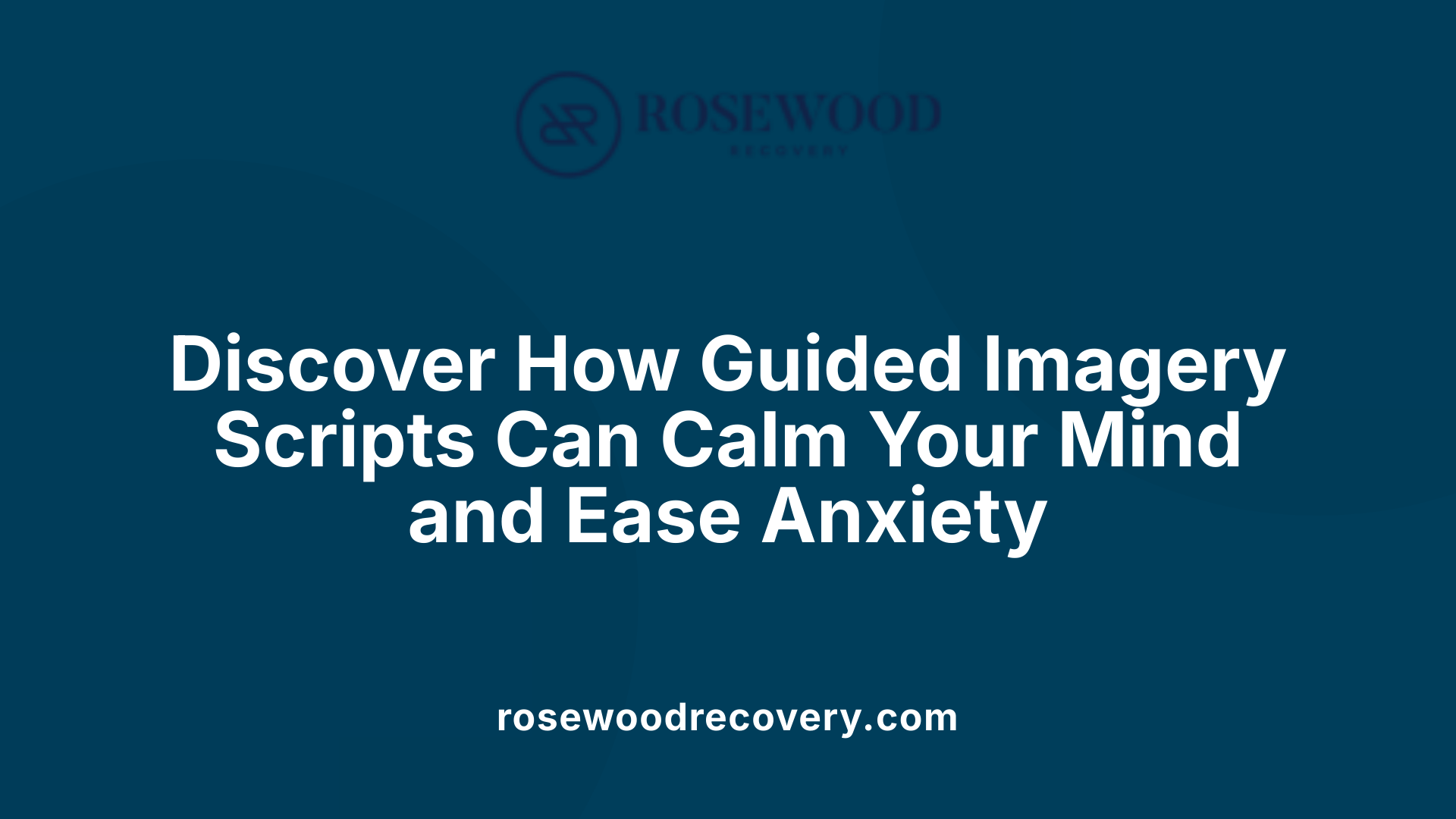
Role of guided imagery scripts in emotional calming
Visualization scripts, often called guided imagery, are structured mental exercises designed to help individuals relax by imagining soothing and positive scenes. These scripts guide the mind through vivid scenarios like walking along a beach, wandering through lush forests, or sitting beside a peaceful ocean. By focusing on detailed sensory experiences—such as the sound of waves, the scent of salt air, or the warmth of sunlight—these scripts engage multiple senses, heightening the relaxation response.
Using guided imagery as part of visualization techniques can significantly lower feelings of anxiety. When triggered, the body’s stress response—characterized by rapid heartbeat, shallow breathing, and muscle tension—is countered by the calming effects of the visualized scene. Incorporating deep breathing and mindfulness elements further enhances the experience, helping calm the nervous system and reduce physical symptoms of anxiety.
Research indicates that regularly listening to or practicing guided imagery scripts can reprogram neural pathways, fostering neuroplasticity. This means that over time, the brain becomes better at producing relaxation responses in stressful situations, decreasing hyper-reactivity of the amygdala—the brain’s fear center—and strengthening the prefrontal cortex responsible for rational thought.
Overall, these scripts are accessible mental health tools that empower individuals to manage anxiety actively. By creating a safe mental space through visualization, individuals can evoke feelings of safety, control, and calmness, making it easier to face daily stressors with resilience.
How do I use visualization techniques for anxiety relief?
How do I use visualization techniques for anxiety relief?
Using visualization to ease anxiety can be an effective self-help strategy. Begin by choosing a quiet, comfortable environment free from distractions. Sit or lie down in a relaxed posture, and start by taking slow, deep breaths to calm your nervous system.
Next, focus your attention inward and imagine yourself in a calming scene. Popular choices include a peaceful beach, a tranquil forest, or a serene mountain view. Engage all your senses to make the scene as vivid as possible: see the colors, hear the sounds, smell the scents, feel the textures, and even imagine tastes or body sensations. The more detailed and immersive your visualization, the more effective it can be.
Incorporate breathing exercises by inhaling slowly through your nose and exhaling through your mouth, synchronizing your breath with your mental imagery. This combination amplifies relaxation. Guided imagery recordings or apps are also useful, especially for beginners, as they provide a structured environment to visualize calming scenes.
Practice these visualization exercises several times a day—morning, before stressful situations, or before sleep—to build resilience against anxiety. Over time, this consistent practice can help lower physical symptoms like rapid heartbeat and muscle tension, and foster a general sense of calm and well-being.
Remember, patience and regularity are essential. With continued practice, visualization can become a powerful tool to manage anxiety and promote mental health.
The relationship between relaxation techniques and visualization for anxiety management
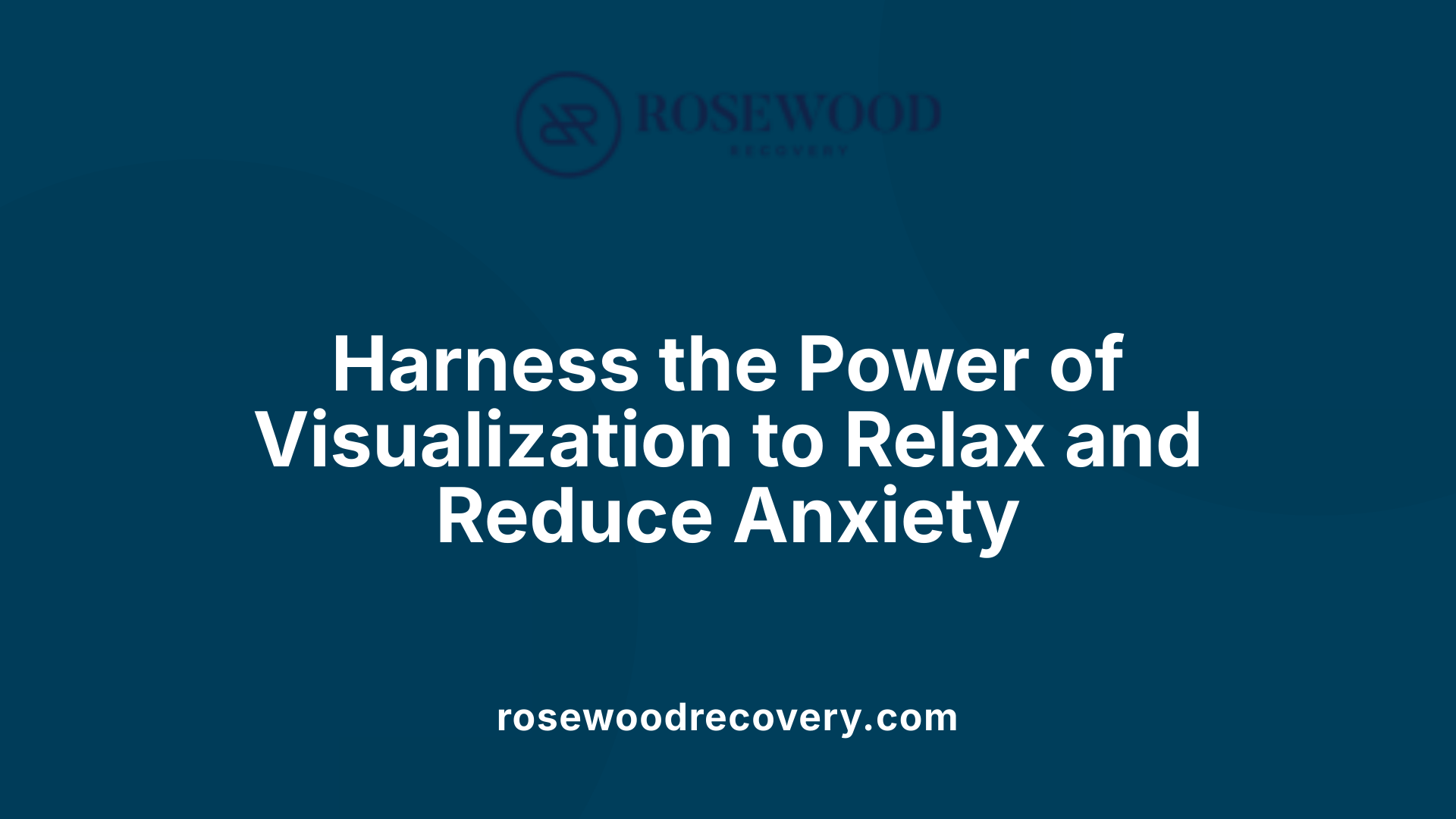
What is the relationship between relaxation techniques and visualization for anxiety management?
Relaxation exercises often include visualization as a key component to help reduce anxiety, as it promotes a relaxed state of mind and body.
Visualization involves creating vivid mental images, such as a peaceful beach or tranquil forest, engaging all five senses to evoke calmness. When combined with other relaxation methods like deep breathing or progressive muscle relaxation, it can significantly enhance the relaxation response.
By focusing on calming scenes, visualization triggers the body's natural relaxation mechanisms, lowering physical symptoms of anxiety like rapid heartbeat and muscle tension. This process activates the parasympathetic nervous system, which helps counteract the fight-or-flight response initiated during stressful moments.
Moreover, guided imagery—where a therapist or a recorded script guides individuals through calming scenarios—serves as a powerful tool in anxiety management. It can be practiced anywhere, anytime, making it accessible for daily stress reduction.
The integration of visualization with mindfulness practices further deepens its calming effects. Mindfulness emphasizes present-moment awareness, and visualization enhances this by immersing the individual’s senses in a safe, serene environment.
Regular practice not only reduces immediate anxiety but also builds emotional resilience. It can be especially helpful before confronting stressful situations like public speaking or medical procedures, providing a mental ‘escape’ that fosters confidence.
In summary, visualization complements various relaxation techniques by activating the body's relaxation responses, improving emotional regulation, and supporting overall mental health. When integrated effectively, these combined methods serve as a practical, accessible approach to managing anxiety and fostering inner calm.
Using visualization exercises to relax and manage stress effectively
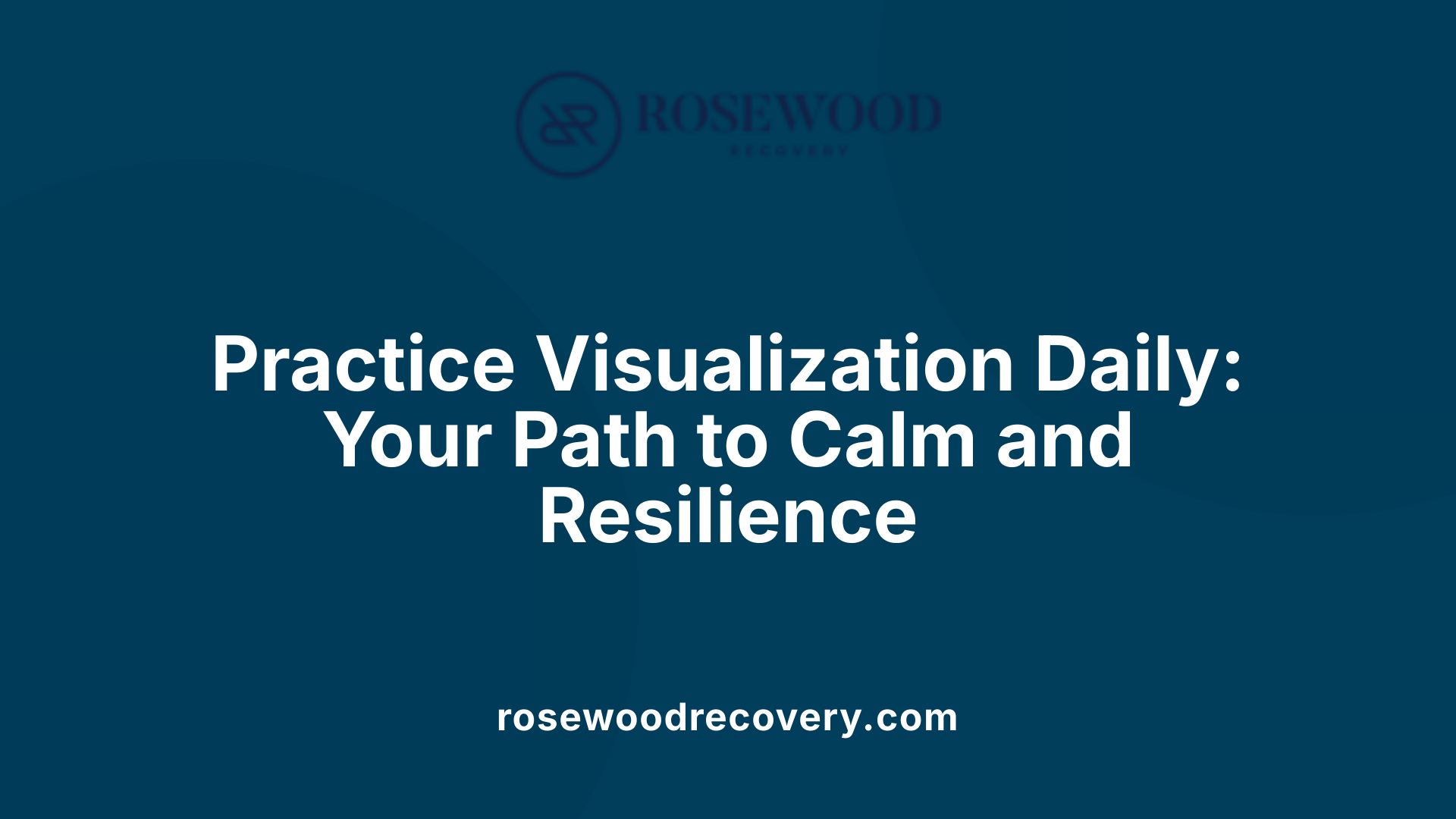
How can visualization exercises be used to relax and manage stress?
Visualization exercises serve as a simple yet powerful way to reduce stress and promote relaxation. These techniques involve creating vivid mental images of peaceful and pleasant environments, engaging all five senses—sight, sound, smell, taste, and body sensations. For example, one might imagine walking along a quiet beach, feeling the sand beneath their feet, hearing the gentle waves, smelling the salty air, and feeling the warmth of the sun.
A common method is guided imagery, where individuals follow scripts or recordings that describe tranquil scenes. This could include visualizing a secluded garden or a calm forest. As they immerse themselves in these images, their bodies respond by relaxing, lowering heart rate, decreasing muscle tension, and reducing the production of stress hormones.
Deep breathing is often integrated with visualization exercises, with practitioners inhaling slowly through their nose and exhaling through the mouth, which further enhances relaxation. The visualizations act as a mental escape from stressors, helping the mind shift focus and calm emotional responses.
Research shows that consistent practice—even for just 5 to 10 minutes daily—can significantly alleviate feelings of anxiety and improve emotional well-being. Whether used in self-help routines, therapy sessions, or stress management programs, visualization provides a private, accessible way to soothe the nervous system and foster a sense of safety and calmness.
Guided imagery exercises: a scientifically supported method to reduce anxiety
What are guided imagery exercises and how do they help with anxiety?
Guided imagery exercises are relaxation methods that involve sitting or lying in a comfortable position while mentally picturing peaceful and calming scenes, such as a quiet beach, lush forest, or gentle meadow. These exercises can be led by a trained therapist or through audio recordings that guide the individual through vivid sensory descriptions of these environments.
The technique encourages engaging all five senses—sight, sound, smell, taste, and body sensations—to create a detailed mental experience. This sensory immersion helps promote relaxation, lower stress hormones like cortisol, and reduce physical symptoms of anxiety such as rapid heartbeat or muscle tension.
Scientific research provides strong evidence supporting the effectiveness of guided imagery. Studies show that practicing this visualization can decrease anxiety, improve emotional regulation, and even enhance overall well-being. For example, it can lead to decreased activity in the amygdala—the brain region involved in fear and stress—and increased activity in the prefrontal cortex, which helps with logical thinking and decision-making.
With regular practice, guided imagery is a valuable addition to anxiety management routines. It offers a simple, accessible way to calm the mind and body during stressful moments or as part of a daily relaxation practice, helping individuals build resilience and foster a sense of peace.
The scientific basis for visualization as an anxiety treatment
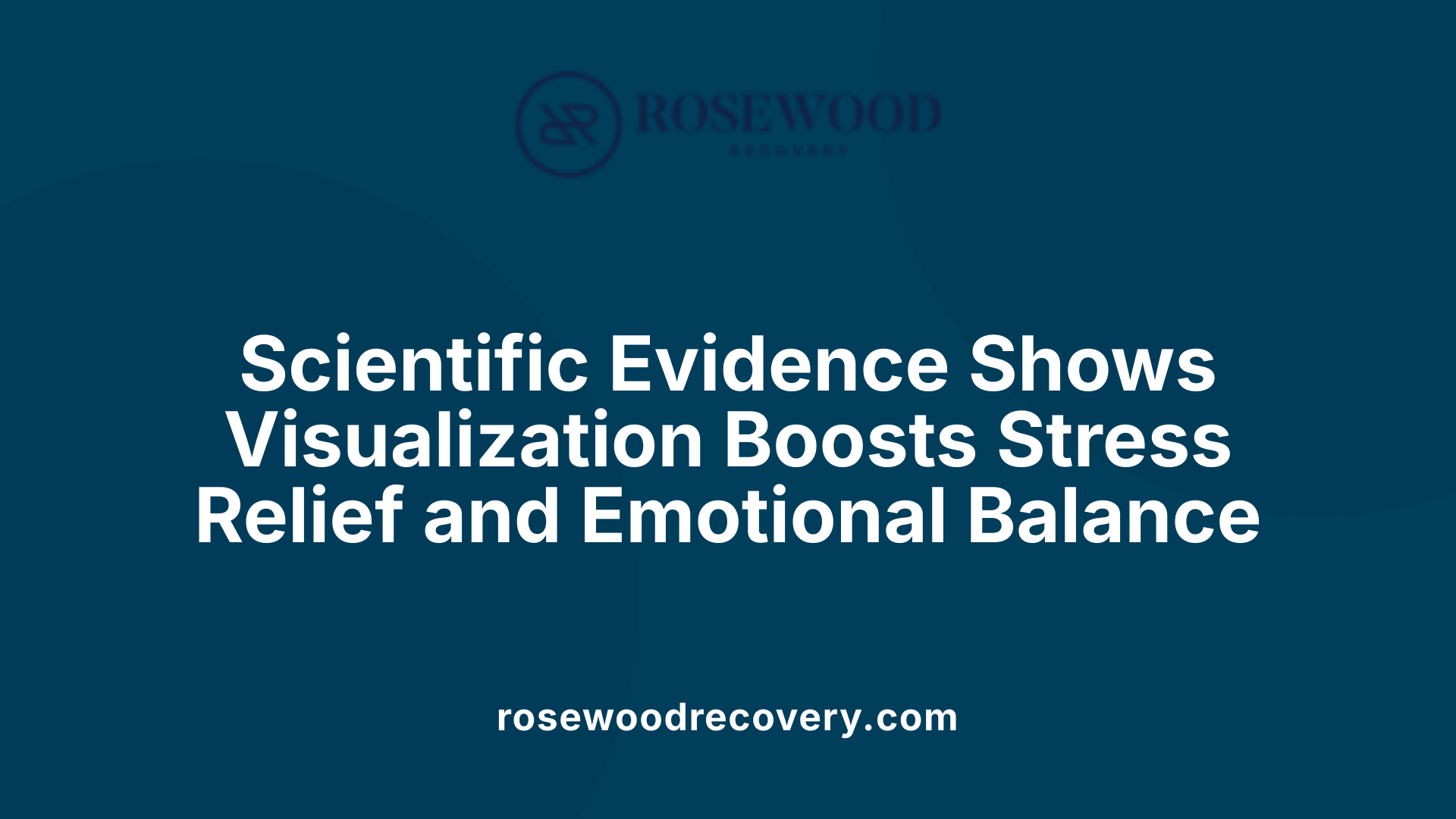
What scientific evidence supports the use of visualization for anxiety reduction?
Empirical research overwhelmingly supports the use of visualization, especially guided imagery, as an effective method for reducing anxiety. Numerous studies have demonstrated that visualization techniques can lead to significant decreases in anxiety levels, often measured through standardized scales like the Hamilton Anxiety Scale (HAM-A).
Physiological improvements are another benefit backed by science. For example, individuals practicing guided imagery have shown reductions in heart rate, blood pressure, and levels of stress hormones such as cortisol. Neurobiological studies, including functional MRI scans, reveal that visualization activates brain areas involved in relaxation, such as increased activity in the prefrontal cortex and decreased activity in the amygdala, which is responsible for fear responses.
The underlying mechanisms involve modulation of the body's stress responses. Visualization appears to trigger the body's relaxation response, activating the parasympathetic nervous system, which counters the fight-or-flight response caused by stress and anxiety. Techniques that involve imagining calming scenes, like beaches or forests, have been proven to lower cortisol levels and reduce the physiological symptoms of stress.
Overall, a growing body of scientific literature affirms that visualization can serve as a powerful complementary approach to traditional anxiety treatments, contributing to both mental and physical relaxation. Regular practice can enhance emotional regulation, build resilience, and promote overall well-being.
| Evidence Source | Effect | Brain Activity Changes | Additional Notes |
|---|---|---|---|
| Clinical trials on guided imagery | Anxiety reduction, lower cortisol | Increased prefrontal cortex activity | Supports use alongside therapy and medication |
| Neuroimaging studies | Lowered amygdala activation | Brain imaging shows calming patterns | Particularly effective for acute stress and chronic anxiety |
| Physiological measurements | Lowered heart rate and blood pressure | Activation of relaxation pathways in the autonomic nervous system | Demonstrates physical effects of visualization |
These findings confirm that visualization is supported by solid scientific evidence as an effective tool for managing anxiety, through both psychological and physiological pathways.
Incorporating visualization into therapy and daily routines for emotional well-being
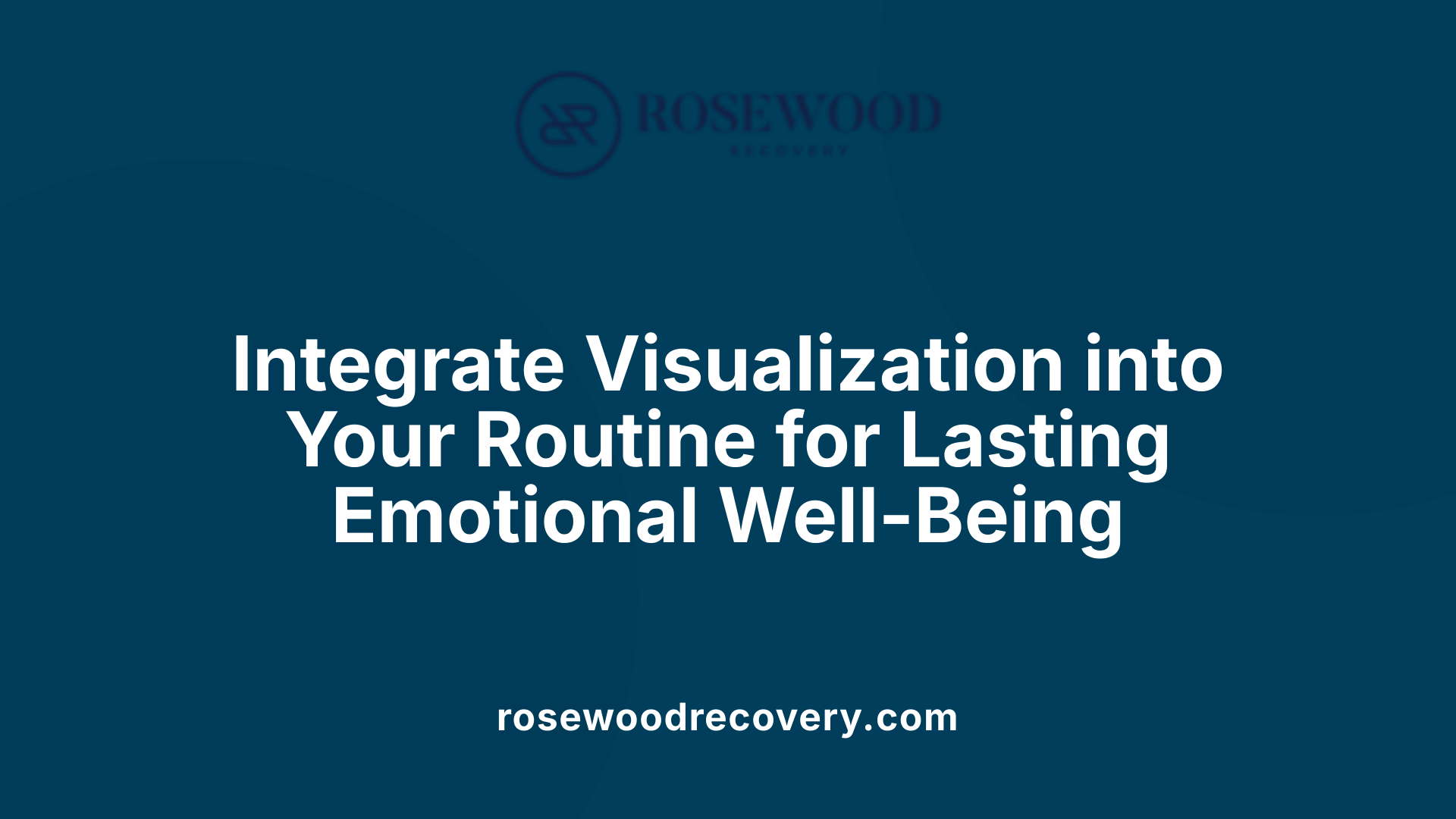 Practical implementation of visualization in self-help and therapy
Practical implementation of visualization in self-help and therapy
Integrating visualization techniques into daily routines and therapy sessions offers a simple yet powerful way to enhance emotional well-being. In therapy, practitioners guide clients through mental imagery exercises such as guided imagery, where individuals imagine calming environments like a beach, forest, or personal safe space. These sessions often involve engaging all senses—visual, auditory, tactile, and olfactory—to deepen relaxation and emotional insight.
For self-help routines, visualizations can be easily incorporated throughout the day. For example, visualizing successful outcomes before challenging tasks or imagining a peaceful scene during moments of stress can help reduce anxiety. Techniques like creating a vision board with inspiring images or practicing sensory-rich imagery, such as picturing the feel of grass or the smell of flowers, strengthen positive self-beliefs and motivation.
One effective approach is to set aside a few minutes daily for visualization practice, ideally in a comfortable, distraction-free environment. Combining visualization with deep breathing or progressive muscle relaxation further enhances its calming effects. Regular use of these practices not only diminishes immediate stress but also builds resilience over time, making it easier to cope with emotional challenges.
Techniques such as affirmations, imagining oneself overcoming fears, or visualizing an emotional “safe place” help foster a proactive and optimistic outlook. Whether used in therapy or personal routines, consistent practice can improve mood, boost confidence, and develop healthier coping mechanisms, supporting overall emotional stability and well-being.
Embracing Visualization for a Calmer, Resilient Mind
Incorporating visualization into your daily routine offers a simple yet powerful way to manage anxiety and improve emotional health. Supported by scientific research and countless success stories, practicing guided imagery, safe place visualizations, and sensory-rich mental scenes can foster a more resilient, calm, and confident mindset. By dedicating just a few minutes each day to mental imagery exercises, you can rewire your brain's responses to stress, lower cortisol levels, and cultivate a lasting sense of peace—making visualization a vital tool in your journey towards emotional well-being.
References
- How to Use Visualization to Reduce Anxiety Symptoms
- Guided Visualization: Dealing with Stress
- Anxiety & Guided Imagery: How Visualization Can Reduce Stress
- Visualization For Anxiety Relief: How It Works - Insight Timer Blog
- Visualization in Therapy: 16 Simple Techniques & Tools
- Visualization meditation: 8 exercises to add to your practice - Calm
- Three Visualization Techniques to Calm Anxiety - Thrope Therapy
- Visualization techniques for anxiety - TheraPlatform



.jpeg)
